Aeroballistic anti-satellite missile Lockheed WS-199C High Virgo (USA)
The main prerequisite for the emergence of the WS-199 program was the progress in the field of air defense systems. Bombers with free-falling bombs could be shot down on approach to targets, and therefore aviation rocket armament was required, allowing not to approach the danger zones. After analyzing, Pentagon experts found that the best combination of flight performance and warhead mass should have air-launched ballistic missiles.
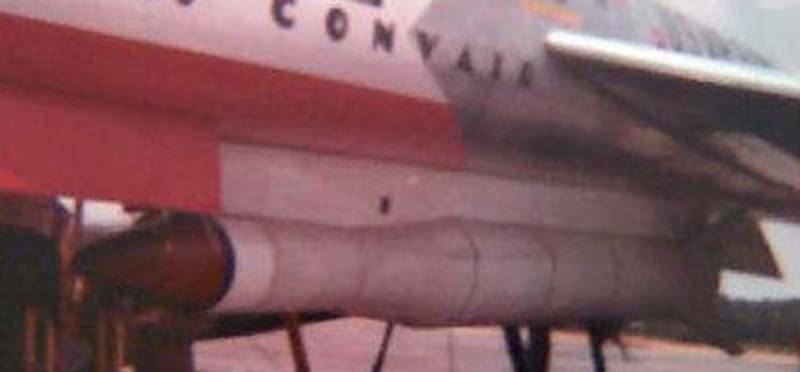
WS-199C rocket on a media hanger
At the beginning of 1957, a new program was launched under the nondescript name WS-199 (Weapon System 199 - “Weapon System“ 199 ”). Several leading companies of the aviation industry were attracted to its implementation, who should have worked out and implemented new ideas and solutions in the metal. Together with other companies, Lockheed and Convair joined the program. Last by this time managed to enter into the composition of General Dynamics.
The development of the rocket was obtained by Lockheed. Her project was designated as WS-199C. In addition, the product was assigned a "star" name - High Virgo ("The Virgin at the Zenith"). The task of the company Convair was to finalize the aircraft carrier, which was chosen as the newest supersonic bomber B-58 Hustler. As far as is known, the modernized aircraft did not have its own designation.
The project WS-199C was based on new and unexplored ideas, but it was planned to implement them with the help of finished products. In order to accelerate the design and simplify the subsequent production of the promising missile, it was proposed to use components and assemblies from the Lockheed Q-5 Kingfisher target aircraft, as well as X-17, MGM-29 Sergeant and UGM-27 Polaris ballistic missiles. First of all, the existing weapons Borrowed power plant and control systems.
From the point of view of architecture, the new High Virgo rocket was a product of a single-stage scheme with a high-power solid-fuel engine. A very simple design of the hull, assembled from a frame and aluminum cladding, was proposed. A conical head fairing was used, behind which the main control devices were placed inside the cylindrical compartment. Under the engine were given the central and tail parts of the body, which had an increased diameter. In the tail located X-shaped aerodynamic control surfaces.
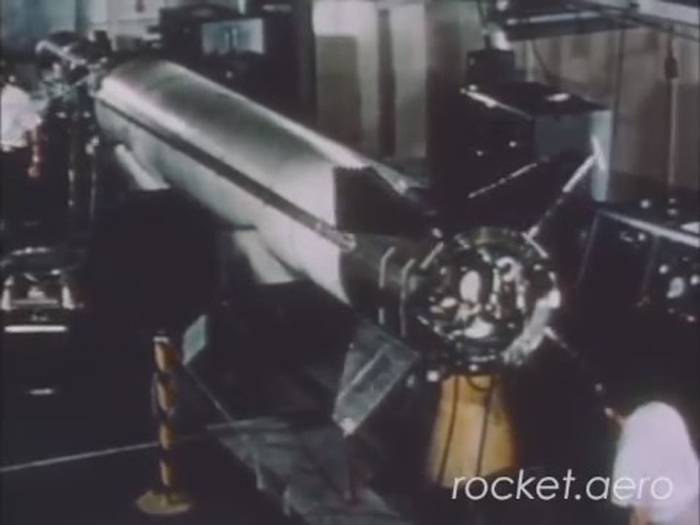
Product on the assembly slipway
Being a ballistic missile, the WS-199C product could be equipped with a relatively simple guidance system, borrowed from the AGM-28 Hound Dog project. The autopilot and the inertial navigation system were located in the instrument compartment. They had to track the position of the rocket in space and develop commands for tailgate rudders. In the automatic control, there were means for receiving data from the aircraft carrier. In flight, it was planned to use the telemetry data transmission equipment. In the course of testing, simplified control systems were used that are capable only of carrying out a previously prepared flight program.
The hull dimensions allowed the High Virgo missile to be equipped with a monoblock warhead with a conventional or nuclear weapon. At the same time, the use of real combat equipment was not originally planned. Until the very end of the work, the rockets were completed only with its weight imitator. What existing and future nuclear warheads could have been used on the WS-199C is unknown.
Most of the rocket body was given for the installation of the TX-20 mid-flight solid fuel engine from Thiokol. This product was developed for the MGM-29 Sergeant tactical missile and showed very high performance. An engine of length 5,9 m with a diameter slightly less than 790 mm developed thrust to 21,7 mc. The existing charge burned out for 29 s, ensuring the acceleration of the rocket to high speed.
The rocket assembly had a length of 9,25 m. The maximum case diameter is 790 mm. The launch mass was determined in 5,4 t. A flight along a ballistic trajectory allowed the rocket to reach speeds of up to M = 6. The firing range, according to calculations, was to reach 300 km.
Aeroballistic rocket was supposed to be delivered to the place of launch using an aircraft carrier. The function of transporting and launching weapons was assigned to the Convair B-58 Hustler supersonic bomber. In the basic configuration, the armament of such an aircraft consisted of a free-falling drop container equipped with a special warhead. Creating a new rocket allowed to expand the combat capabilities of the machine. In the late fifties, the B-58 was tested and prepared for mass production, and therefore the success of the WS-199C project was of particular importance to American strategic aviation.
As part of the Virgin at the Zenith project, Convair has developed a special tool for transporting and dropping a promising missile. Instead of the standard suspension device for the original container, it was proposed to mount a special pylon under the rocket. It did not require any modifications to the design of the aircraft.
The new pylon was a product of large elongation, placed under the bottom of the fuselage. The pylon body was made in the form of a fairing that protected the internal equipment from the incoming air flow. The upper cut of the fairing was smooth and adjacent to the bottom of the fuselage. The lower part of the pylon, in turn, was made in the form of a broken line, corresponding to the rocket contours. Inside the pylon there were locks to hold the rocket and electrical devices to communicate with the aircraft equipment.
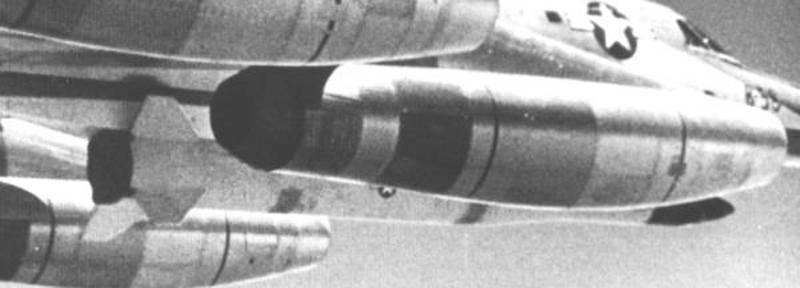
Bomber in flight
The draft design of the WS-199C High Virgo missile system was prepared at the start of 1958. Pentagon representatives got acquainted with the submitted documentation, and soon gave permission to continue the work. In June, the defense ministry and contracting companies were awarded a contract to build and test experienced missiles. Trials planned to begin as soon as possible.
The comparative simplicity of the project and the use of ready-made components made it possible to assemble experienced missiles in the shortest possible time. However, it was not without problems. There were difficulties with the delivery of an inertial navigation system, because of which the first two missiles were able to equip only with the autopilot. As a result, they had to fly in accordance with a predetermined program. Autonomous controls were checked for subsequent flights.

First reset WS-199C from media
To conduct test launches at the beginning of September 1958, one of the experienced aircraft B-58, which received the pylon of the new model, flew to Eglin air base (Florida). Part of the flight was to be conducted at its aerodrome. In addition, in the tests it was planned to use the base at Cape Canaveral. The planned routes of the rockets lay over the central part of the Atlantic Ocean. Contingent target areas were also located on the high seas.
The program of test launches was as follows. A carrier aircraft with a missile under the fuselage took off from Eglin Air Base or Cape Canaveral, gained altitude and went on a combat course. At an altitude of 12,1 km, when the carrier speed was M = 1,5, the rocket was reset, which then had to turn on the engine and go to the required trajectory. The flight ended with a rocket falling into the sea. Throughout the flight, the accompanying aircraft were supposed to take telemetry.
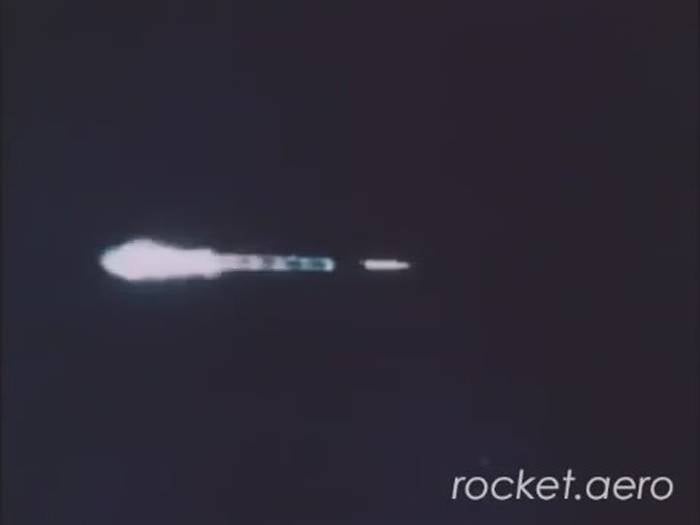
Engine start moment
The first test launch of the WS-199C rocket in a simplified control system took place on 5 September 1958. The reset and removal from the carrier went smoothly. By 6 second flight turned on and went to the desired mode of the engine. However, after a few seconds, the autopilot failed. The rocket began to make uncontrollable vibrations, and it had to be destroyed with the help of a self-destruct. During the flight, the product rose to an altitude of 13 km and covered a distance of several tens of kilometers.
Analysis of telemetry allowed to find the cause of the accident. Management systems were refined and changes implemented in the project. Before the next test launch, full-scale ground tests were conducted. Only after this, permission was granted for a second launch from a carrier aircraft.
19 December 1958, an experienced B-58, again dropped an aeroballistic missile. After a short horizontal acceleration, she began to sharply gain altitude. Moving along a ballistic trajectory, WS-199C rose to an altitude of 76 km, after which it moved to a descending part of the trajectory. The maximum speed during this flight reached M = 6. The rocket fell into the ocean about 300 km from the launch point. The launch was considered successful.

Rocket at the time of discharge (top right view). Cables to communicate with the carrier are visible.
4 June 1959, after the next stage of rocket development, the third test launch took place. This time, the carrier aircraft lifted a fully loaded rocket into the air, equipped with a standard guidance system. The mission of this flight was to obtain the maximum range. By adjusting the trajectory with the help of the rudders, the on-board automatics raised the rocket to a height above 59 km. The flight ended in 335 km from the discharge point. Overcoming this distance took exactly 4 minutes. The inertial navigation system and controls worked without errors, and the Maiden at the zenith successfully completed the task.
In the late 1950s, leading countries sent their first satellites into orbit. It was obvious that in the near future, space could become another place for the deployment of weapons, and therefore means are needed to combat such threats. For this reason, a proposal appeared to test the WS-199 family of missiles as an anti-satellite weapon. In the middle of 1959, Lockheed and Convair began preparations for a test attack of the spacecraft.
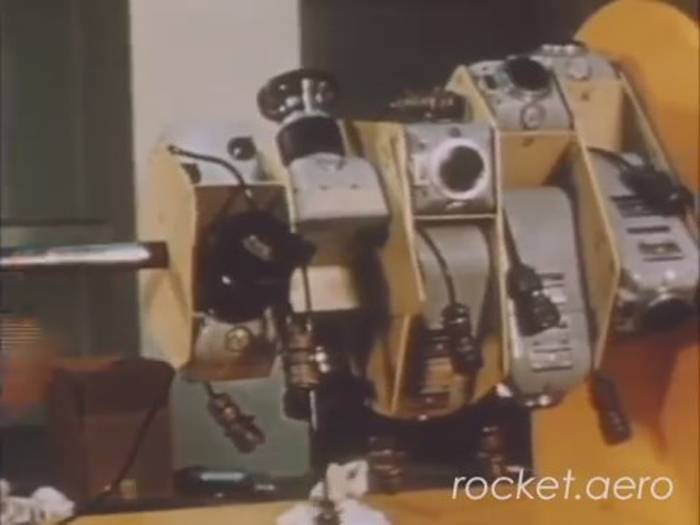
Cameras fourth experienced rocket
For the new test was prepared by a special rocket, markedly different from previous ones. Almost all of the hull and steering panels were changed to steel. The simulator of the warhead was removed from the head compartment, and the placement of the instruments was also changed. Developed a new head fairing with transparent windows. Underneath, they installed a special system with 13 cameras pointing in different directions. According to the flight program, 9 should have followed the approach of the rocket and the target satellite, while the rest were intended to capture the Earth. Before installing the fairing, the cage with the cameras was wrapped with a heat insulator. Finally, a parachute rescue system and a radio beacon were placed in the head fairing.
The training target was the Explorer 4 satellite, launched in July 1958. It was intended to study the radiation belts and carried Geiger counters. The product was in orbit with an apogee of 2213 km and a perigee of 263 km. Interception was planned to carry out during the passage of the satellite at a minimum distance from the Earth.
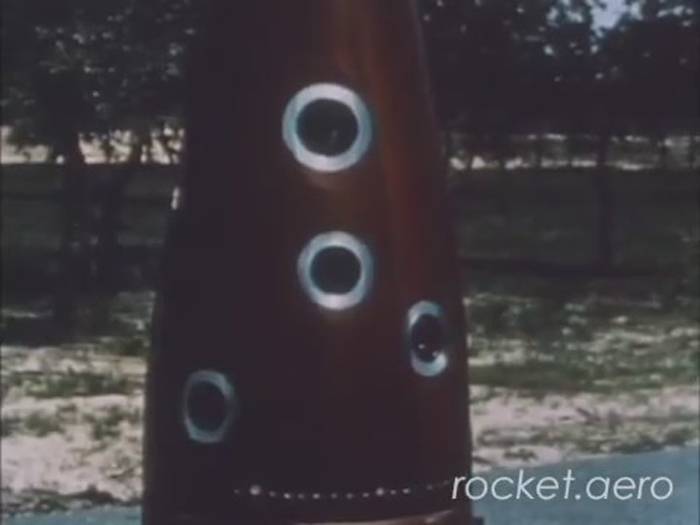
Special fairing for photographic equipment
The tests of the WS-199C rocket in the anti-satellite configuration took place on September 22 1959. For greater acceleration of the rocket with the subsequent increase in altitude, the carrier developed the speed M = 2. Uncoupling and subsequent procedures were carried out normally. But a few seconds after the reset, the rocket transmitted a message about the failure of control systems. At 30, the second flight was lost to her. From the ground, they saw an inversion track, which indicated that the rocket was on a ballistic trajectory, but it was not possible to establish exact flight parameters.
The failure of communications soon led to the loss of the rocket. As the testers could judge, WS-199C returned and fell into the ocean. However, long searches did not bring results. The exact location of the fall of the rocket is still unknown. Together with the prototype, the cameras and their films went down to the bottom, making it possible to evaluate the effectiveness of firing at the satellite. However, the result was hardly outstanding, as Explorer 4 remained in its orbit.

Anti-satellite "Maiden at the zenith" at the time of discharge
Of the four High Virgo test launches, only half ended in success. The other two due to the fault of the control equipment turned out to be emergency. In the autumn of 1959, the specialists of the development companies and the US Department of Defense analyzed the data collected and determined the future fate of the project.
In its current form, the Lockheed WS-199C High Virgo aeroballist rocket could not enter service and improve the combat capabilities of the B-58 Hustler aircraft. However, the overall direction was of interest to the air force. In this regard, the customer ordered to complete work on the topic of "The Maiden at the zenith", but to use the developments on this project when creating the next ballistic missile. The main result of the subsequent development work was the new GAM-87 Skybolt rocket.
Under the WS-199 air force program, US defense companies developed two air-based ballistic missiles. The resulting products showed quite high performance, but still not suitable for adoption. However, during the design and testing period, it was possible to accumulate much experience and collect the necessary data on the real work of such weapons. Developments, solutions and projects WS-199B and WS-199C soon found application in the creation of a new airballistic rocket.
On the materials of the sites:
http://designation-systems.net/
http://globalsecutiry.org/
http://space.skyrocket.de/
http://astronautix.com/
http://alternatewars.com/
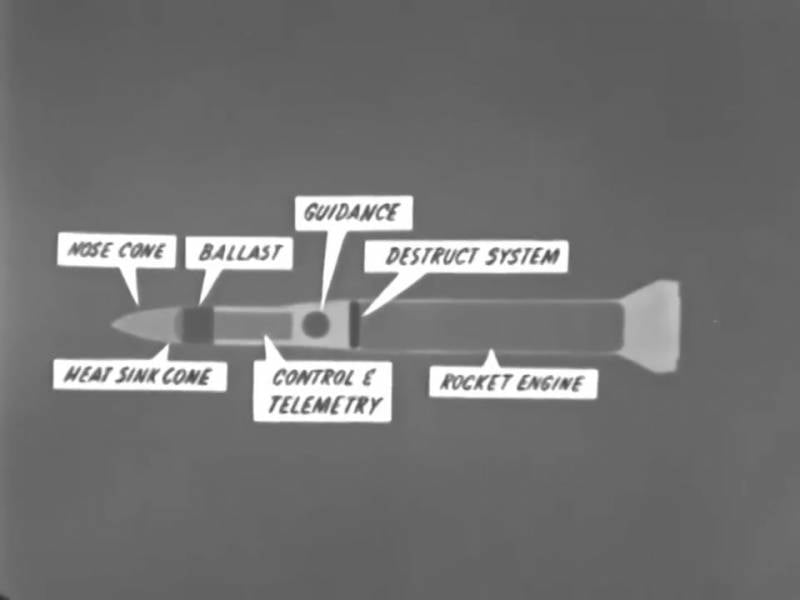
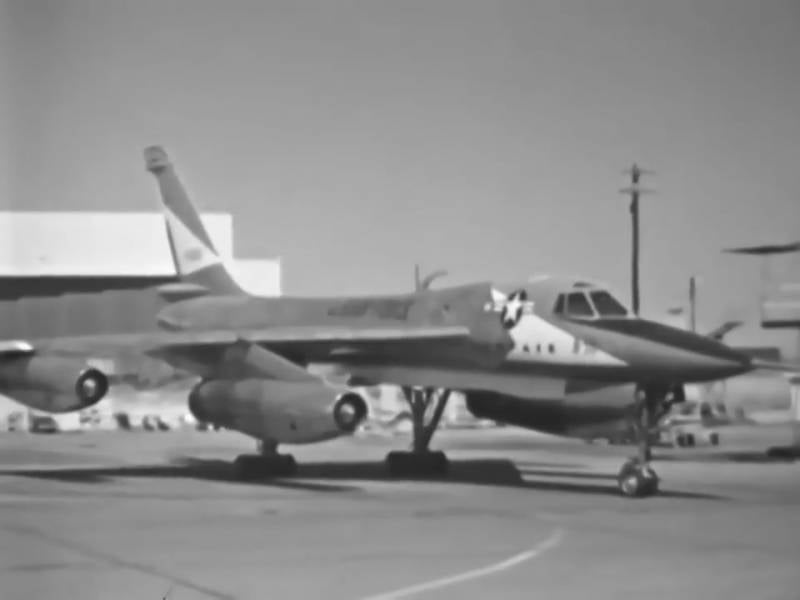
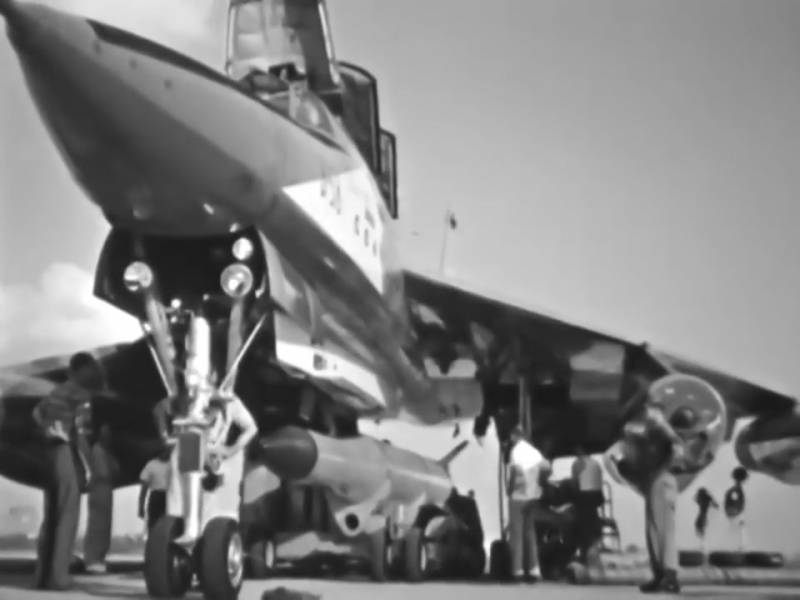
Information